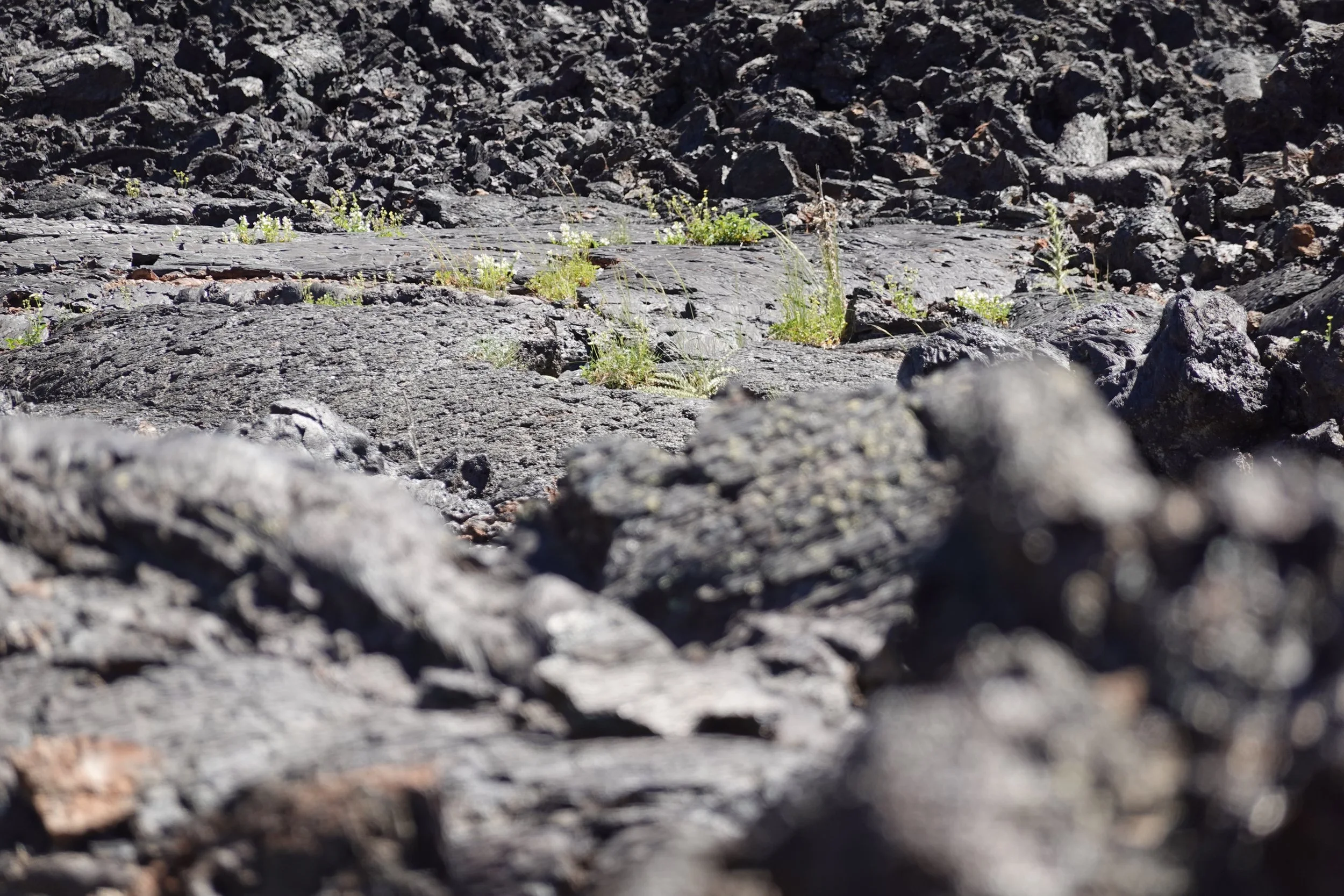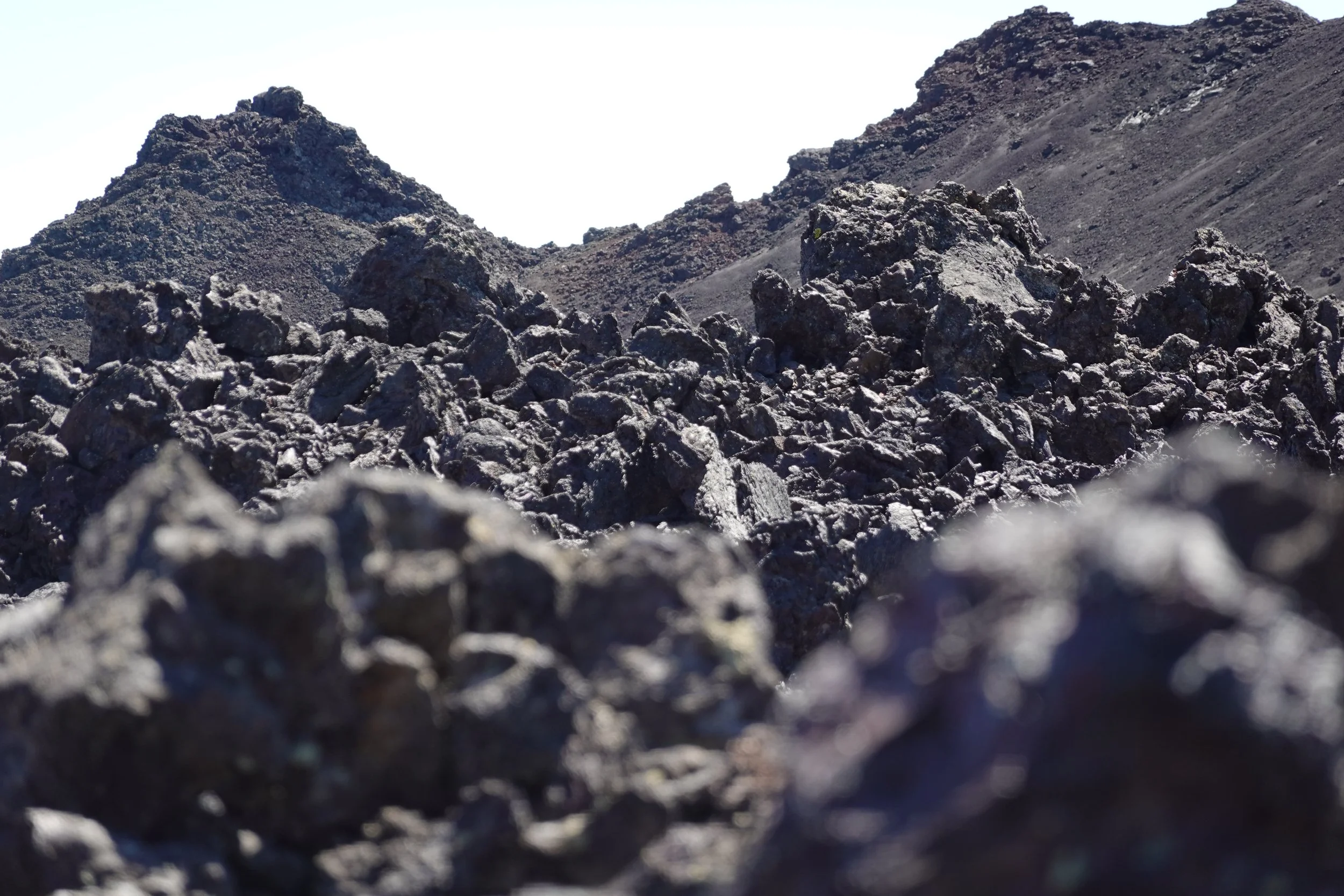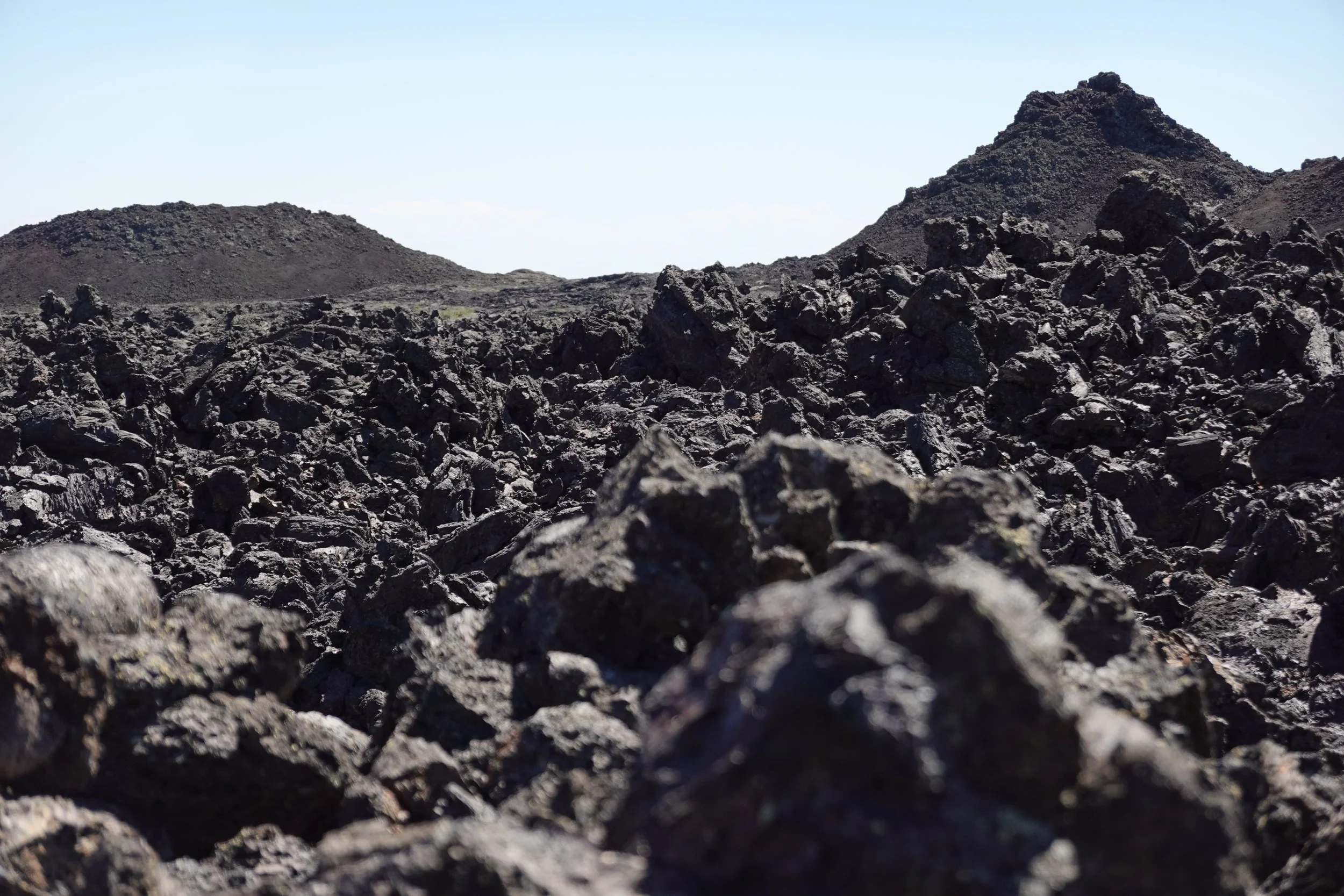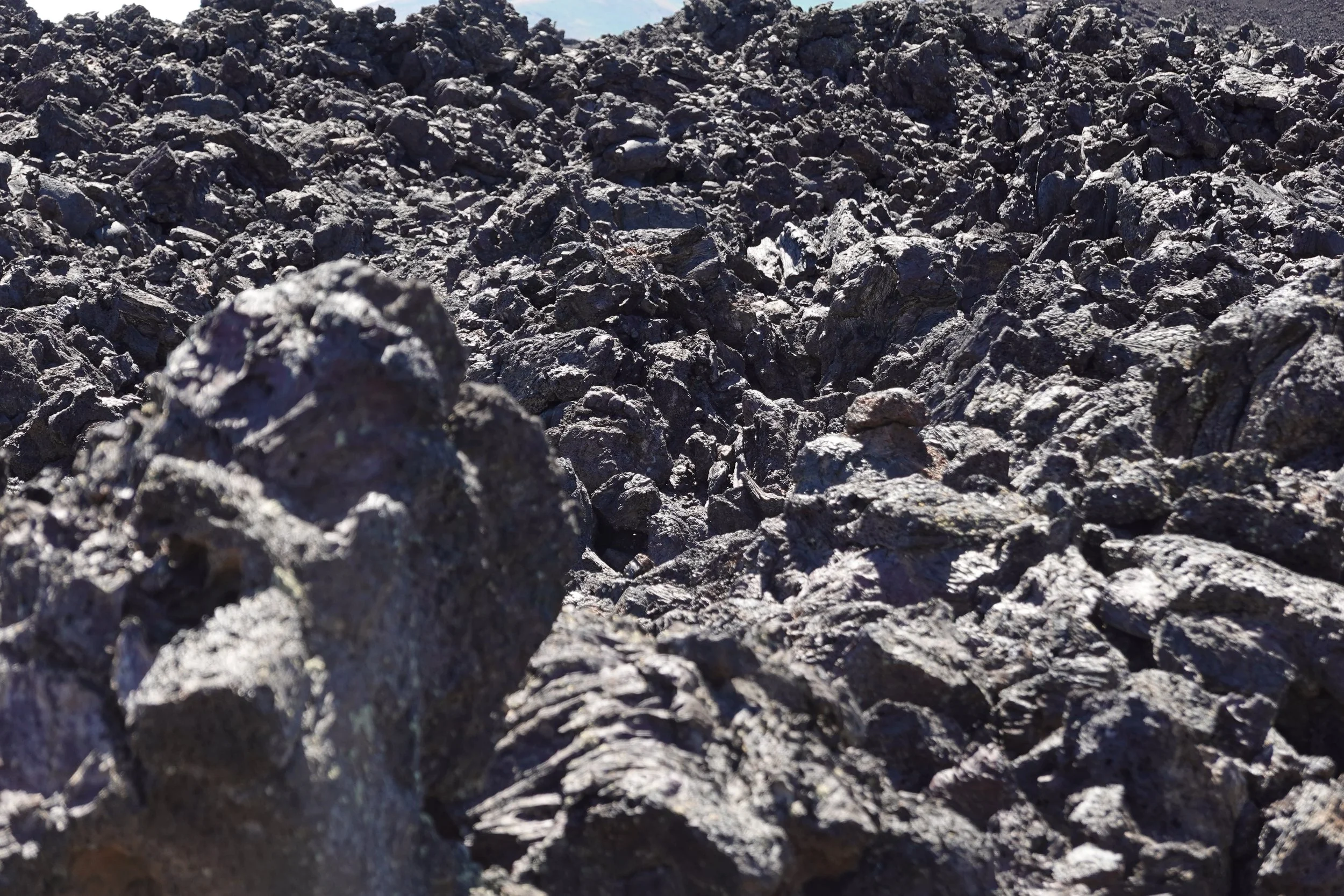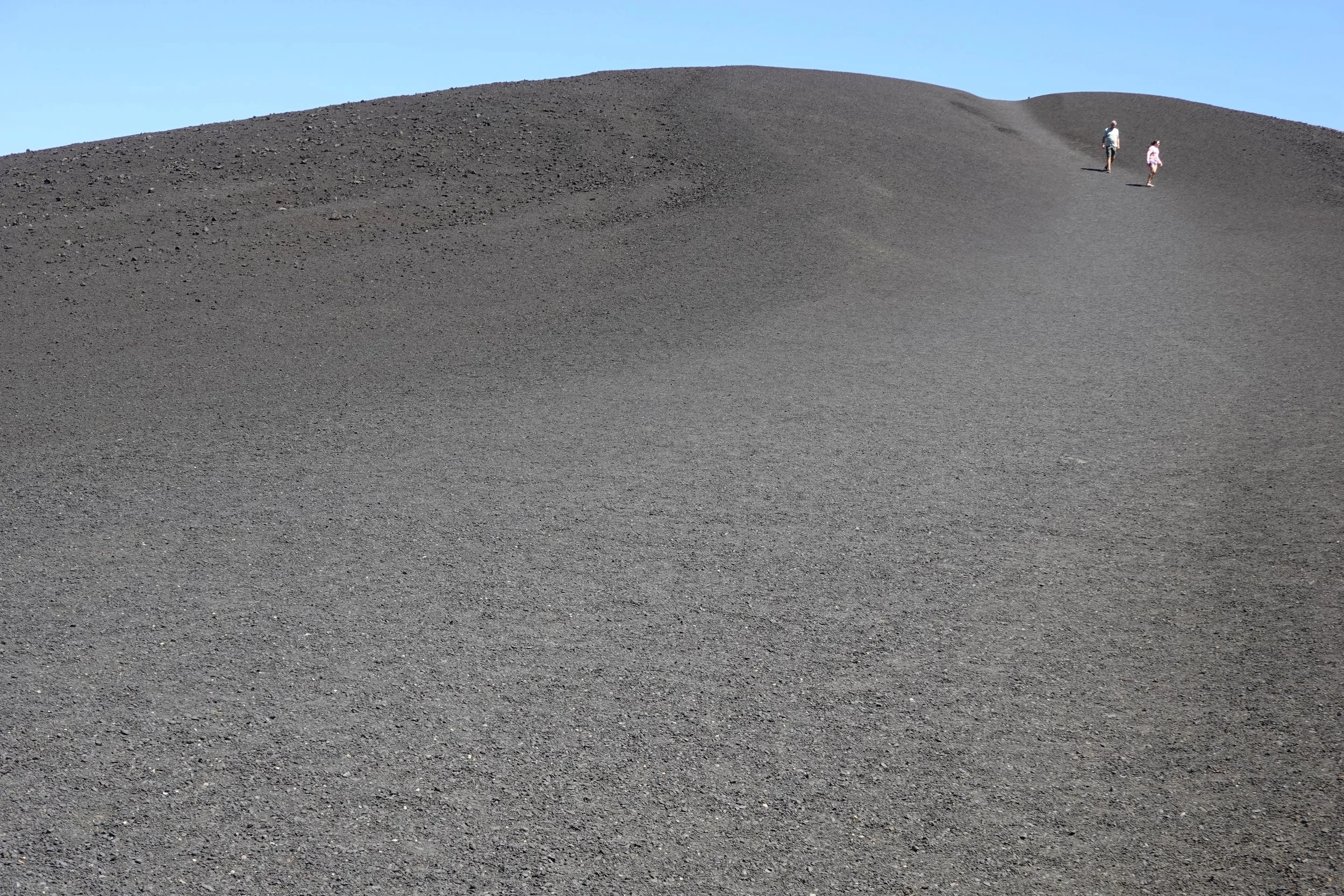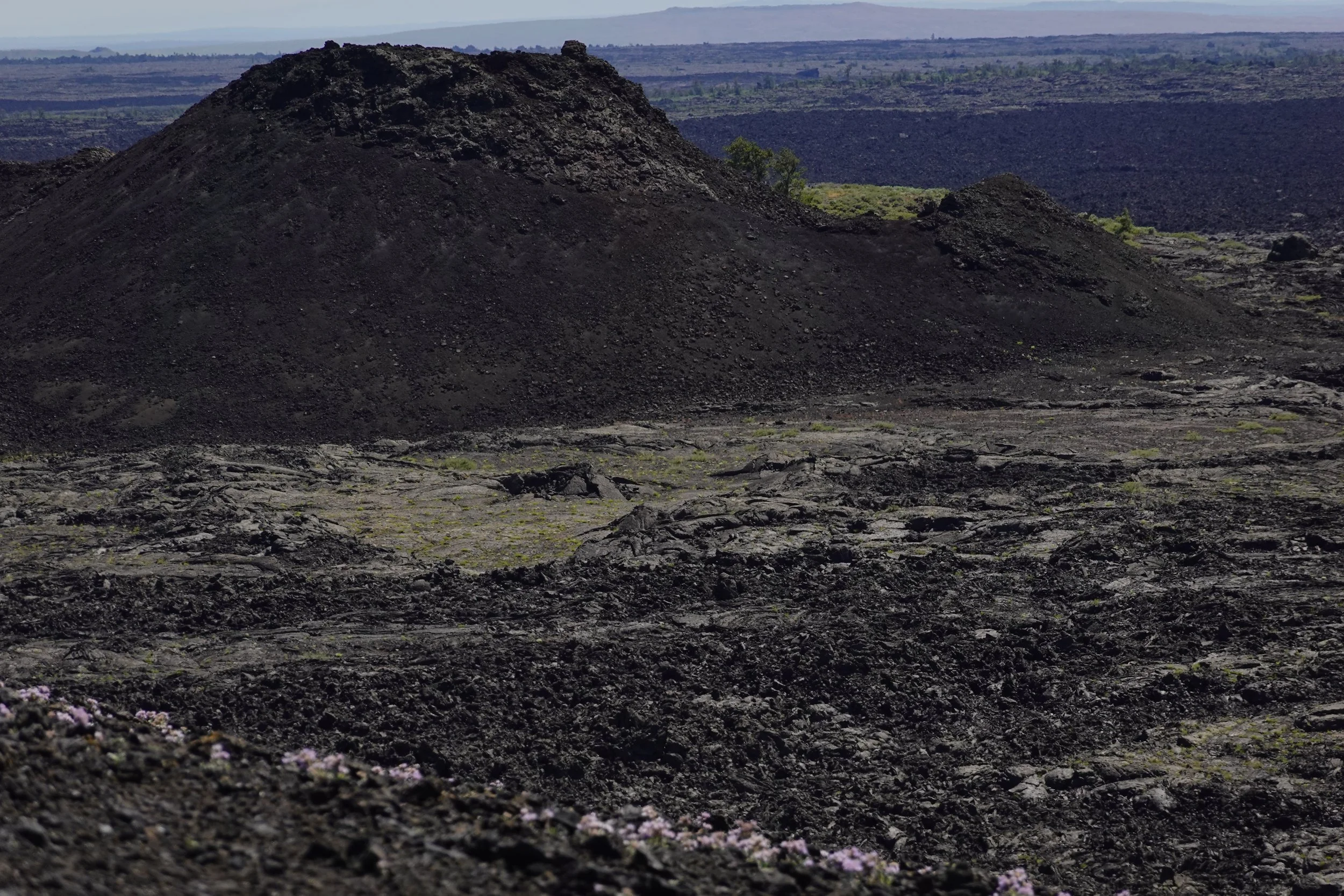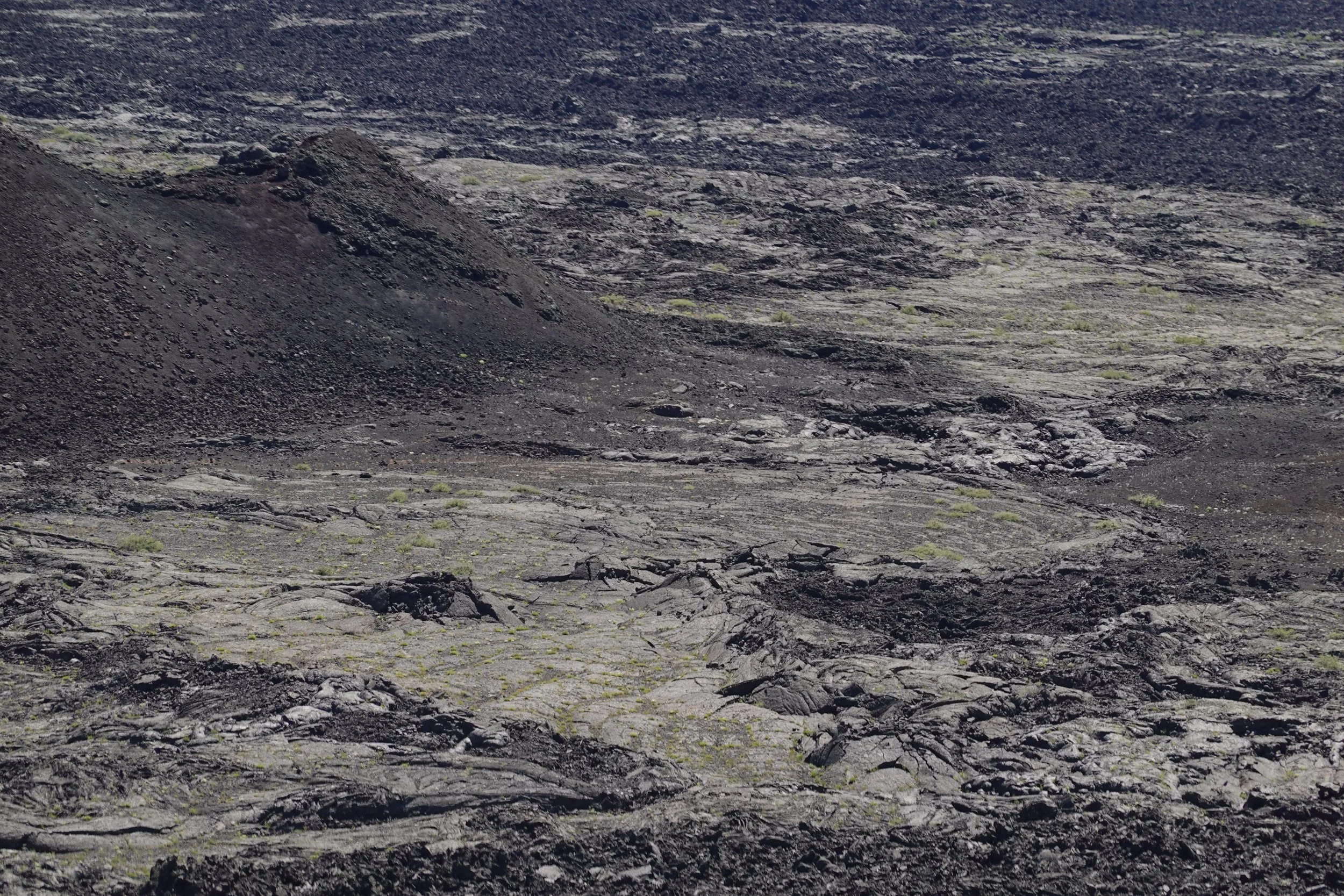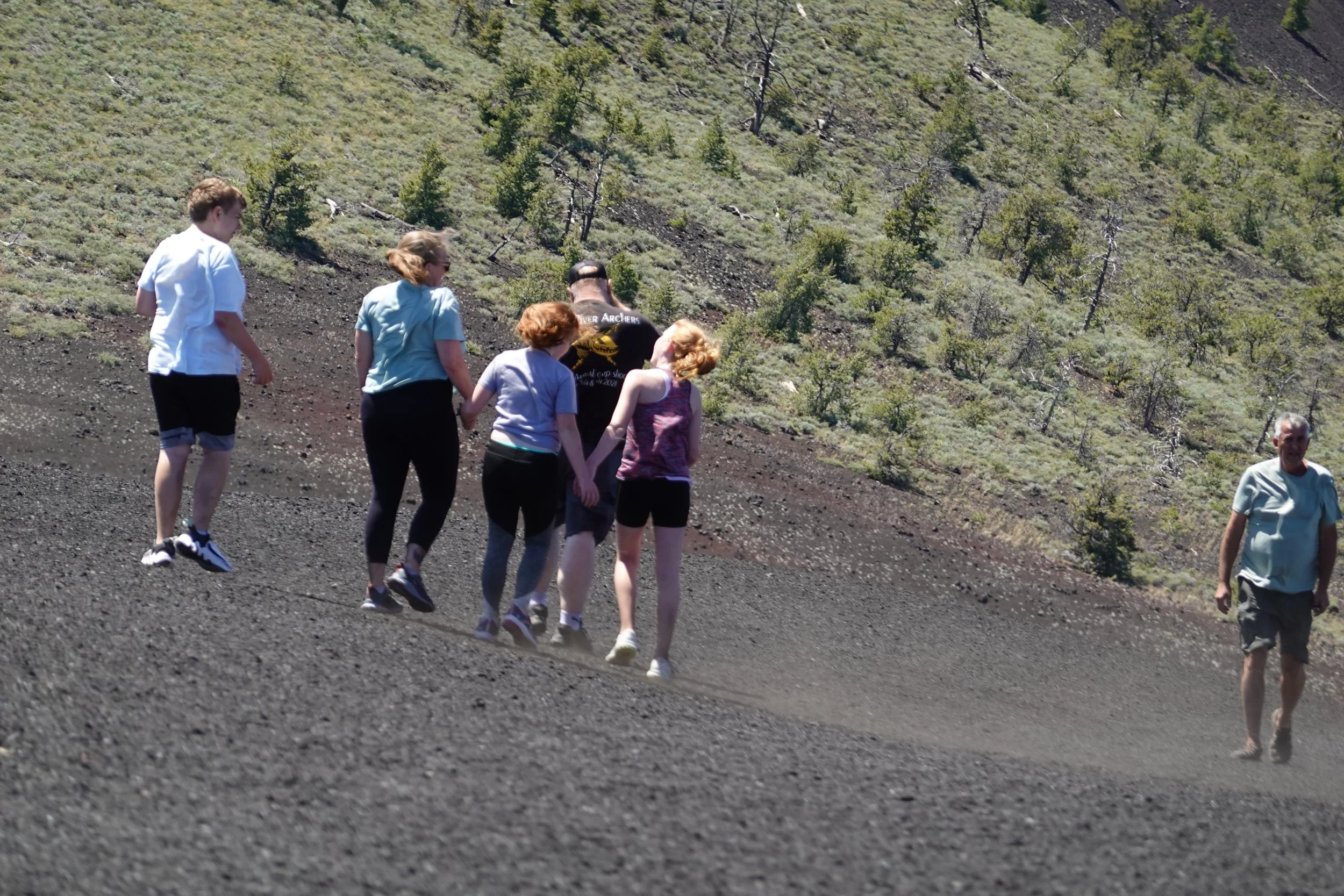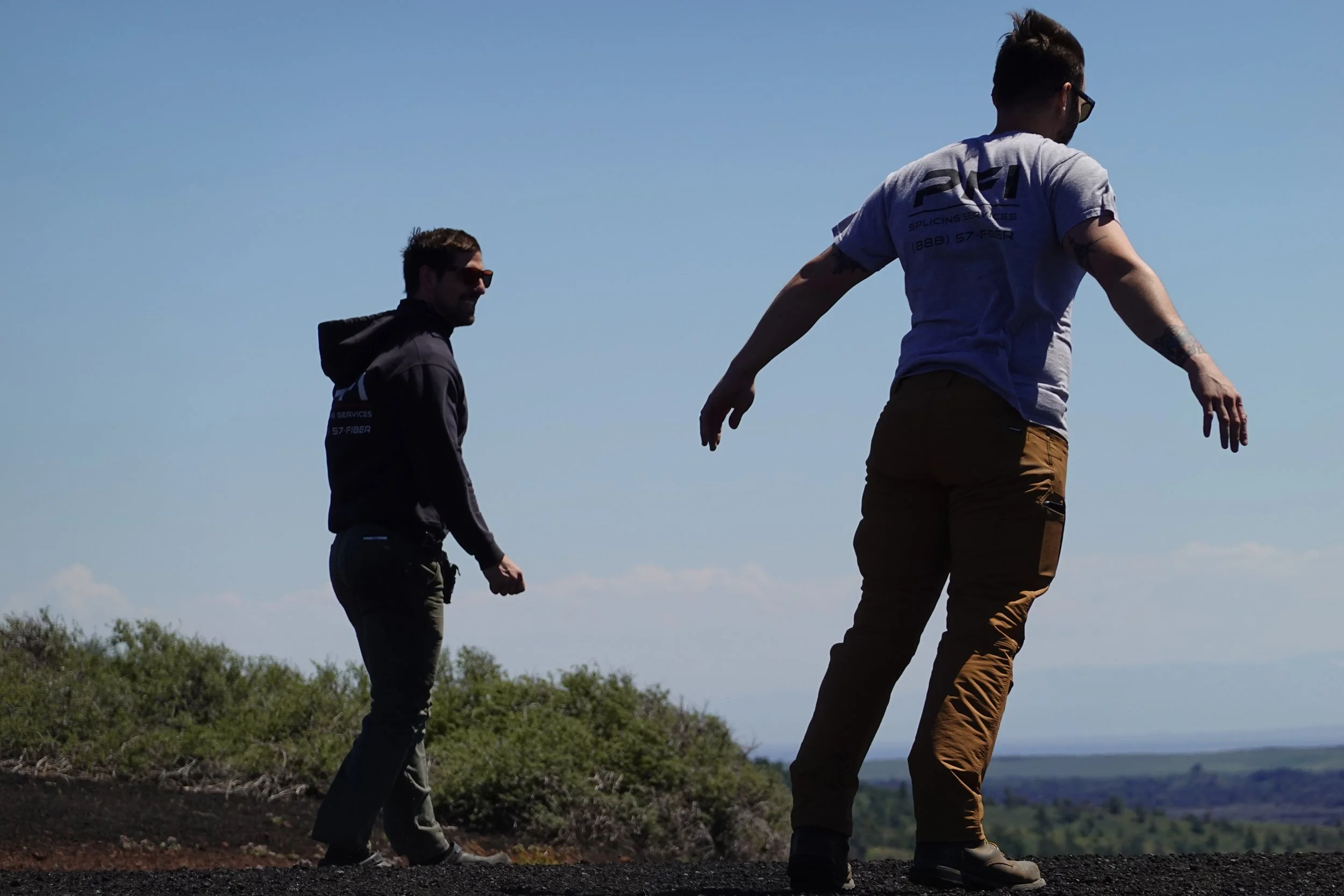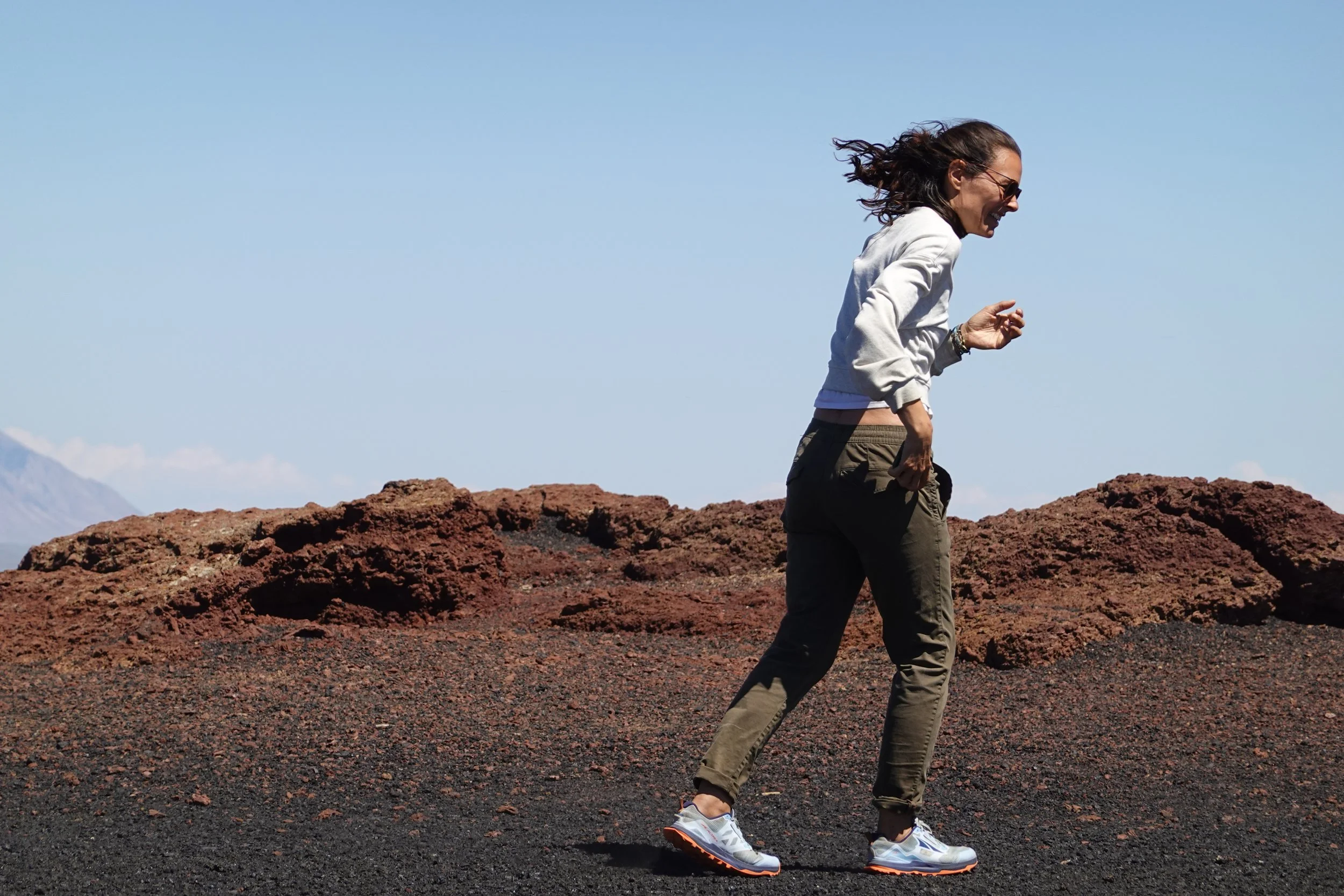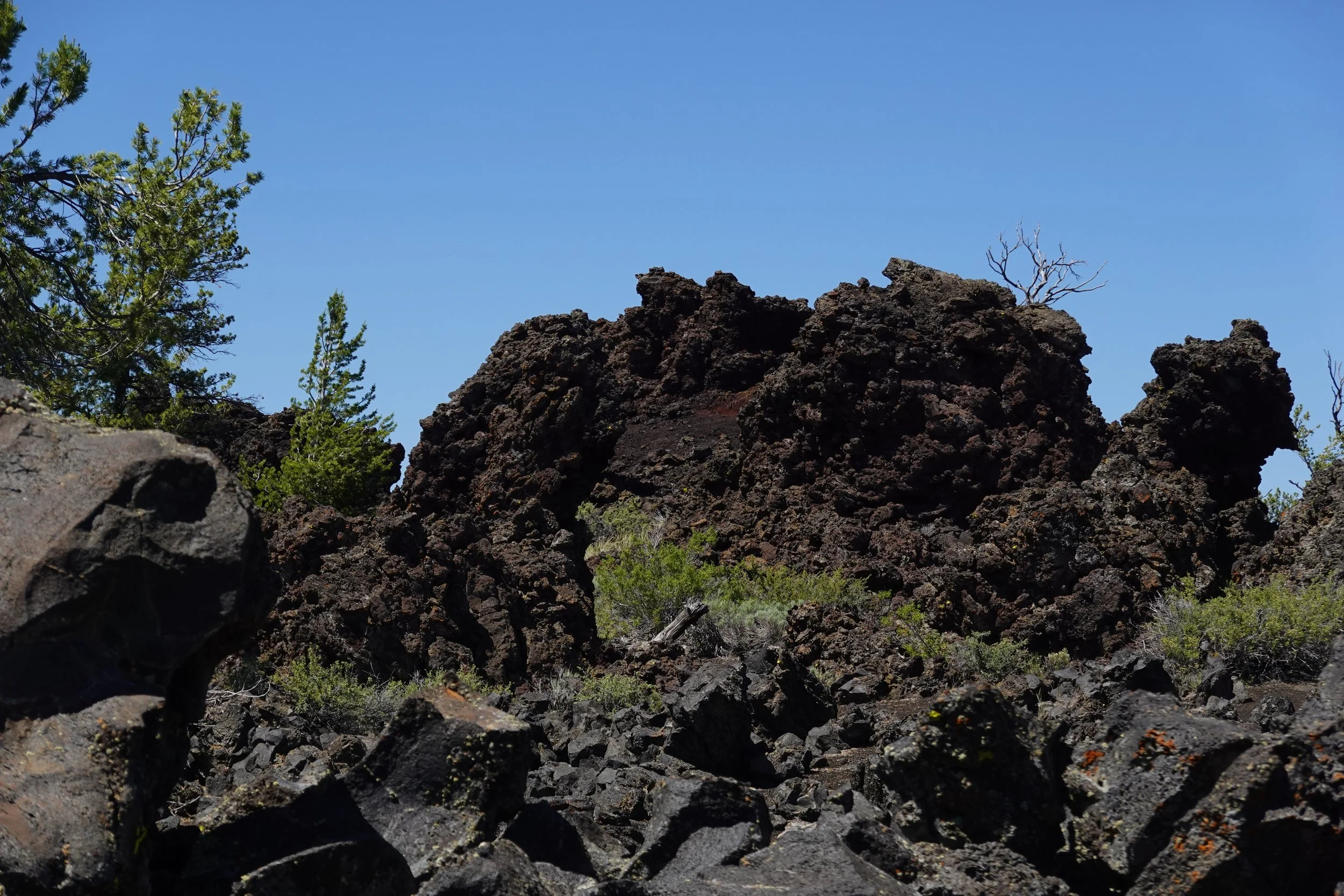Craters of the Moon National Park
Craters of the Moon National Park was a volcano that never rose, rather it just lazily rolled around underground and scratched its belly, casually oozing lava from various fissures along a 52 mile long crack the Earth’s crust called the Great Riff. It spread its moon-like features over more than 600 square miles with basalt secretions that were so moon-like, NASA sent astronauts there in the 1960’s to train and learn before heading to the moon. Unlike their towering, orgasmic spewing relatives: the volcano, Crater of the Moon prefers foreplay over ejaculation, releasing its viscous semen throughout multiple phases over thousands of years, the last being just around 2,000 years ago, a relatively new feature for our mother Earth.
There were three types of lava to ooze each originating from the Hawaiian language:
Pāhoehoe (pronounced pah-hoy-hoy) – which means “smooth, unbroken lava” in Hawaiian. It describes lava that cools into a ropy, billowy, or smooth surface. It forms when lava flows slowly and retains its heat, allowing it to stretch and create rippling patterns.
‘A‘ā (pronounced ah-ah) – which translates to “stony, rough lava” in Hawaiian. It refers to sharp, jagged lava flows that form when lava moves faster and cools quickly, breaking into rough, angular chunks.
Komoiwannalaya (pronounced come-on-i-want-to-lay-you) – which translates to “going in and out or penetration lava”. It explains how when two lavas rub against one another or penetrate, the lavas get excited and invite other lavas to join, eventually trembling and spewing out large, rectangular chucks that, when exposed to oxygen, release spores like mushrooms and dissolve the negative energy in the air.
